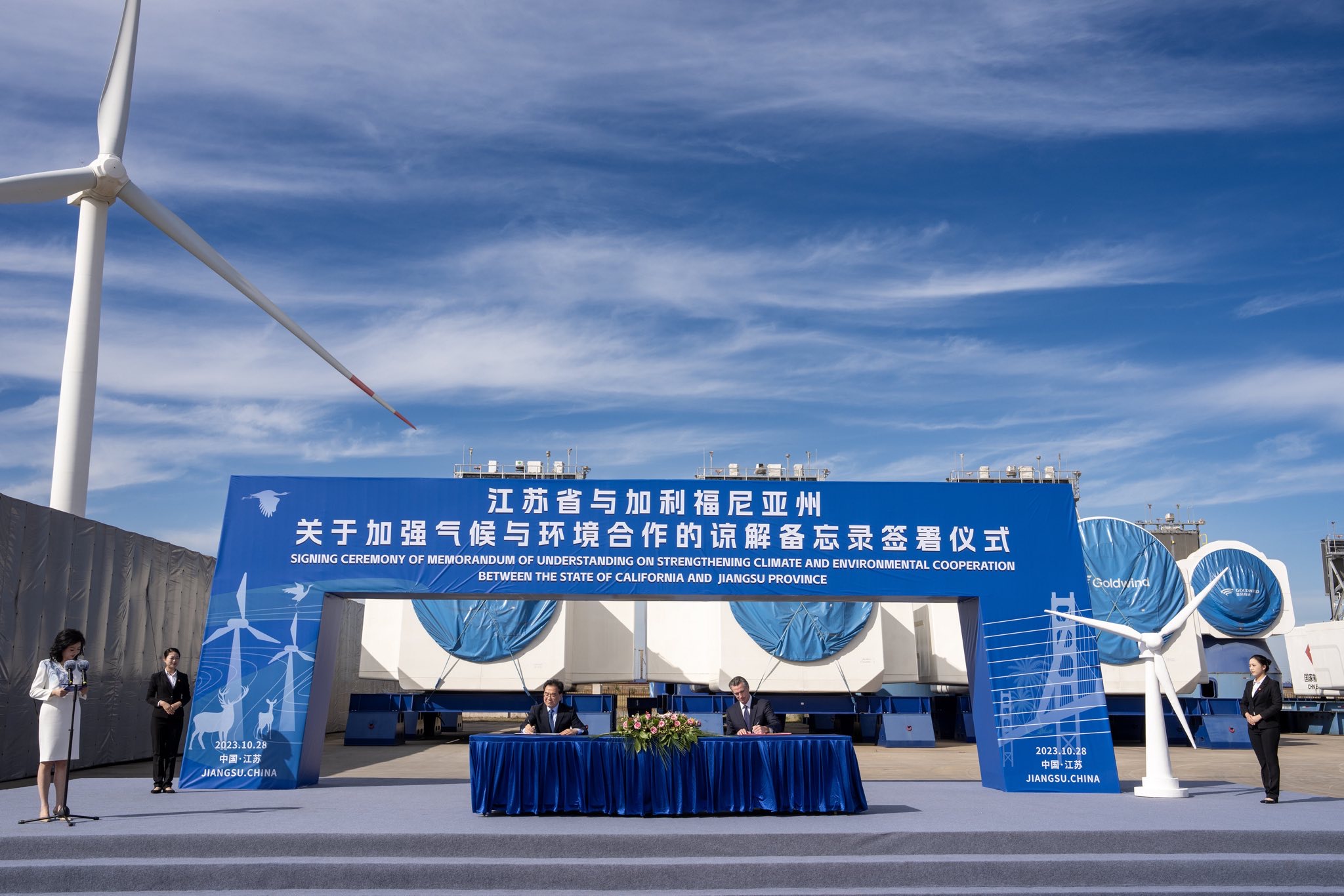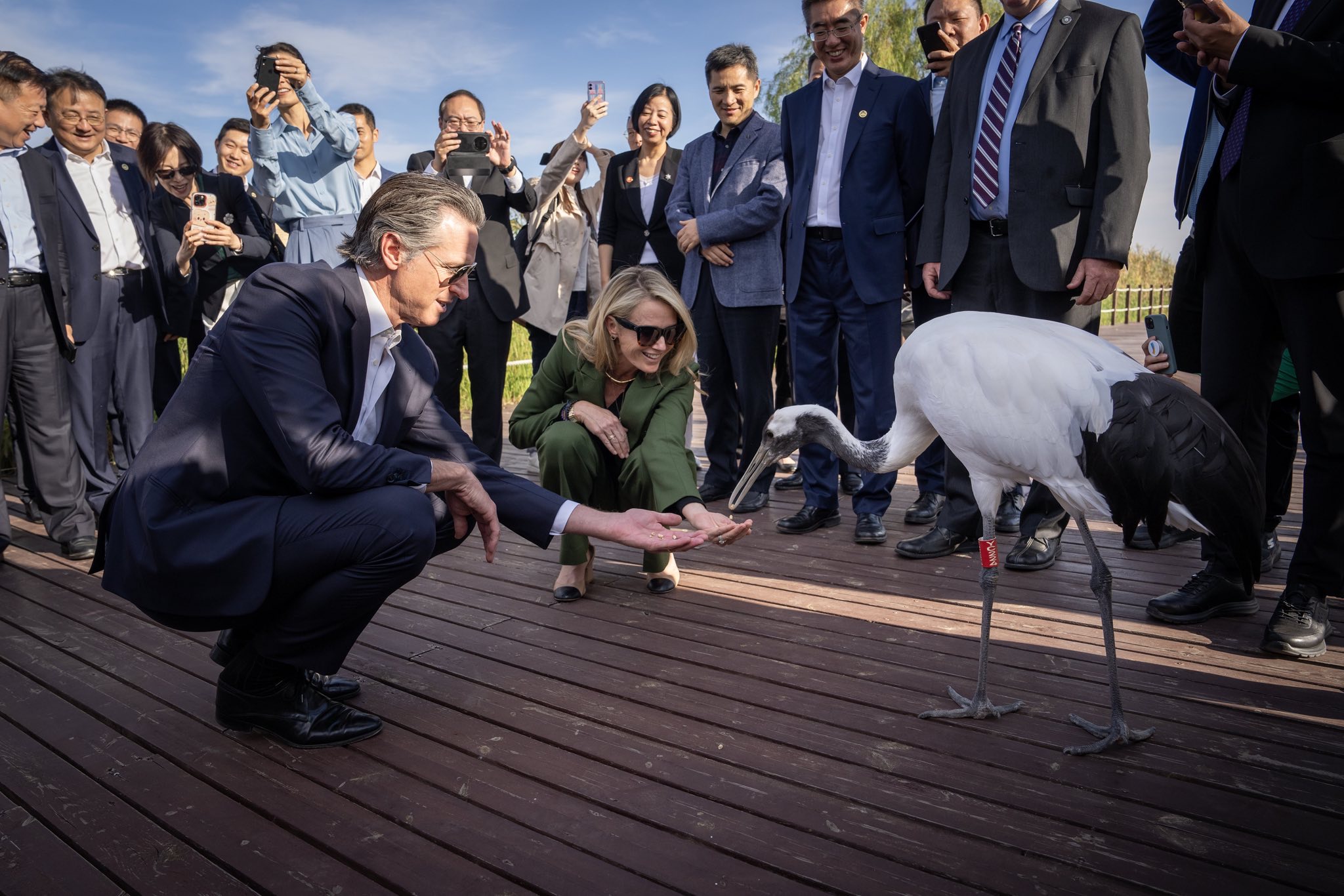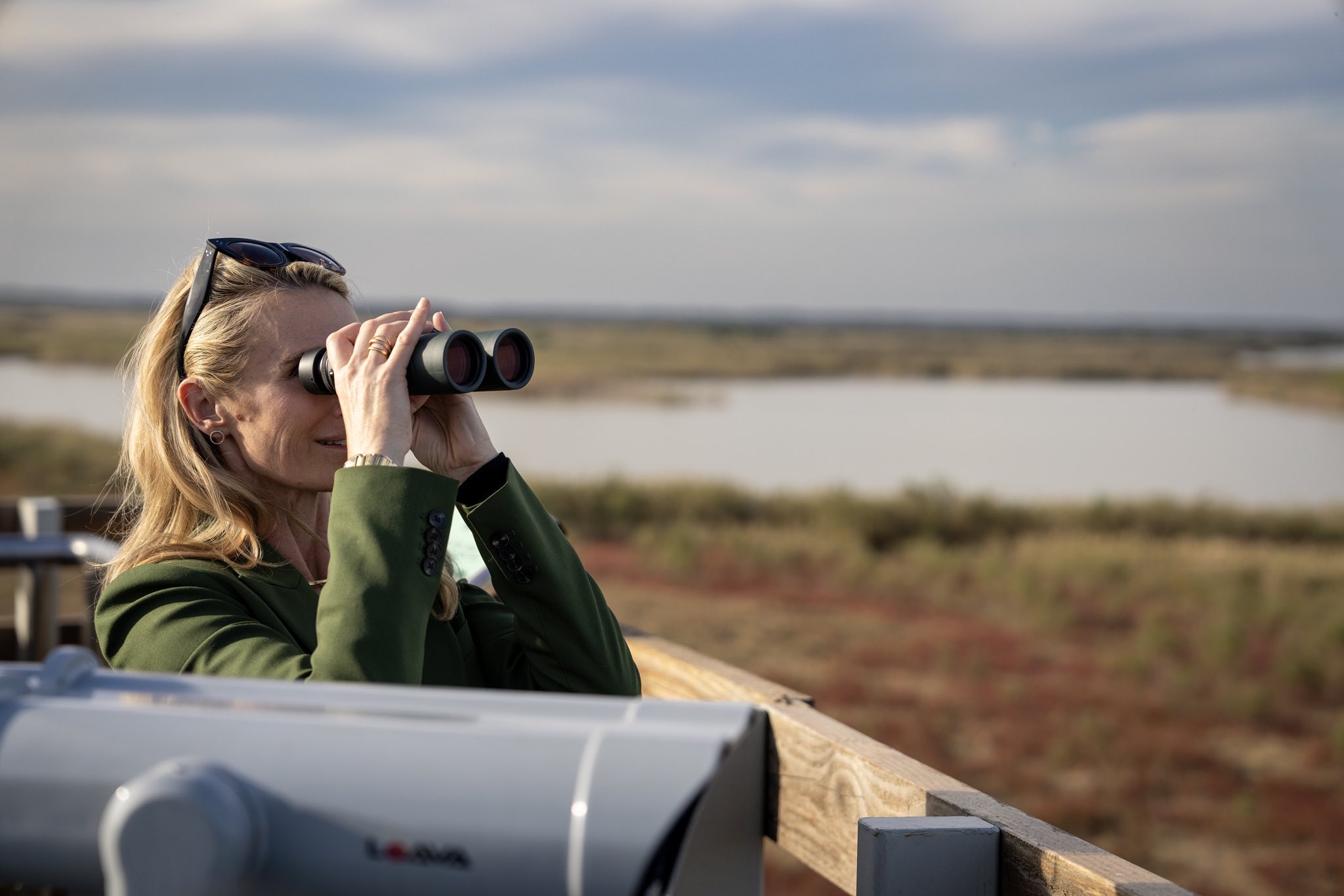WHAT YOU NEED TO KNOW: Governor Newsom’s Saturday in China was packed with clean energy, clean transportation, climate action and some good old fashioned bird watching.
YANCHENG – Governor Gavin Newsom’s weeklong trip to China continued Saturday in the province of Jiangsu where the Governor renewed a key climate partnership at an offshore wind facility, visited a wetlands nature preserve, and rode high-speed rail.
Downloadable high-res photos are available here.


In Yancheng, a city of nearly 7 million people, the Governor met with Jiangsu Party Secretary Xin Changxing and other local leaders before heading to an offshore wind facility. With huge wind turbines nearby, Governor Newsom and Party Secretary Xin signed a Memorandum of Understanding (MOU) focused on advancing clean energy innovation and nature-based solutions. The text of the MOU is here.
“Our ability to harness clean wind energy is critical to our clean energy future and today we saw that it is possible. California is doubling down on offshore wind and working to be the first state on the West Coast to power our homes and cities with offshore wind power.
From advancing clean energy to protecting our lands and coastal waters, our partnership with Jiangsu is moving the needle on climate action.”
Governor Gavin Newsom
Jiangsu is known as a Chinese hub for offshore wind energy with the largest offshore wind farms in the country. China is the world’s largest generator of wind power, much of which is offshore, and wind power contributes 7.5% to the country’s total power generation. California has set ambitious offshore wind goals of 2-5 gigawatts (GW) by 2030 and 25 GW by 2045 and is on track to be the first West Coast state with offshore wind.
The California and Jiangsu delegations then traveled to the Yancheng National Nature Reserve, the largest coastal wetland in China. The Governor, First Partner Jennifer Siebel Newsom and Party Secretary toured a part of the reserve that protects the red-crowned crane, one of the rarest cranes in the world.
China is a recognized global leader on biodiversity and has well exceeded California’s 30×30 goal – to conserve 30% of lands and coastal waters by 2030. California just recently announced that it’s providing $8.5 million in grants to support the 30×30 strategy by increasing climate resilience on the state’s natural and working lands.


The California Delegation wrapped its day in Yancheng and departed for Shanghai via high-speed rail. The train ride covered about 200 miles in two hours and illustrates the promise of high-speed rail – fast, affordable, clean transportation. The country’s high-speed rail system had about 26,000 miles of track at the end of December 2022. The goal is to add another 1,500 miles this year, extending what is already the longest high-speed railway in the world.
California is aiming to transform transportation in the U.S. when the state’s high-speed rail becomes operational in the Central Valley between 2030 and 2033. When fully operational, California’s high-speed rail will take 400,000 cars off the road annually.
The California High Speed Rail Authority yesterday announced preliminary designs for the nation’s first high-speed train cars, as well as the Central Valley stations. Earlier this month, Governor Newsom sent a letter to President Biden thanking the administration for $202 million in funding for high-speed rail in the Central Valley and asked the Biden-Harris Administration to approve $3 billion that would accelerate state efforts to construct track and stations.
California is also working to boost cleaner, cheaper transit. Yesterday, Governor Newsom announced that Caltrans approved $192 million in California Climate Investment funds for 136 public transportation projects that will cut pollution and create more affordable transportation options, especially for disadvantaged communities.
The Governor ended his day at a Shanghai reception hosted by the Bay Area Council with leaders of California-based businesses. China is one of California’s largest and most valued trading partners. Our economies – the second and fifth largest in the world – are intertwined and have been since the earliest days of our statehood. Our people-to-people ties are long-standing and enduring. In 2022, two-way trade between California and China amounted to $166 billion, making China our state’s largest trading partner – and providing revenues for California companies, jobs for California workers, and connectivity with the Chinese people.

